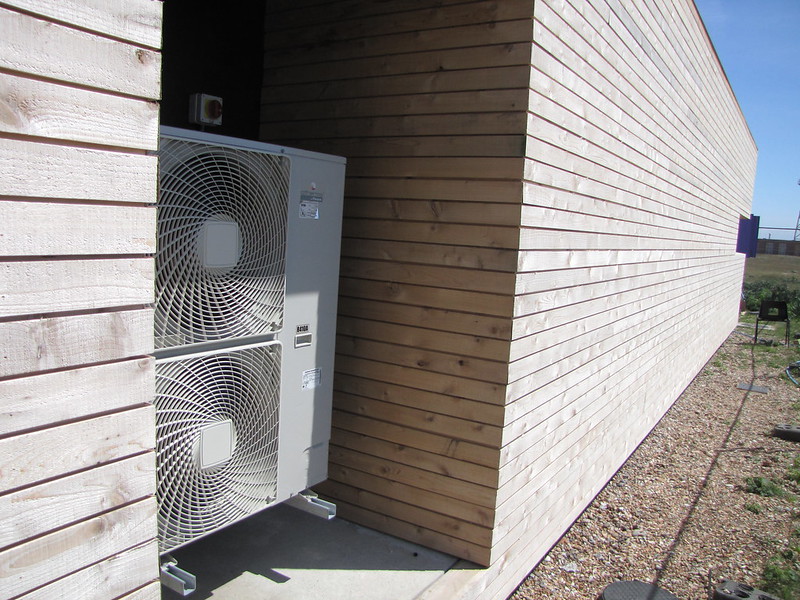Air source heat pumps can indeed work with existing radiators, but there are several technical considerations to keep in mind to ensure optimal performance and efficiency. This comprehensive guide will delve into the nitty-gritty details, providing a hands-on, expert-level understanding of how to successfully integrate an air source heat pump with your home’s existing radiator system.
Compatibility of Existing Radiators
When using an air source heat pump with existing radiators, the compatibility of the radiators is a crucial factor to consider. Older or smaller radiators, such as cast-iron models, may not be suitable as they require larger amounts of very hot water to effectively heat the space. This can be challenging for heat pumps, which typically operate at lower temperatures compared to traditional boiler systems.
To assess the compatibility of your existing radiators, consider the following:
- Radiator Size: Measure the surface area of your radiators to ensure they are large enough to effectively transfer heat at the lower temperatures provided by the heat pump. As a general rule, larger radiators are better suited for heat pump systems.
- Radiator Material: Avoid using cast-iron or small panel radiators, as they may not be compatible with the lower operating temperatures of a heat pump. Opt for modern, well-insulated radiators made of materials like aluminum or steel.
- Radiator Age: If your existing radiators have been installed within the last 20 years, they are more likely to be compatible with a heat pump system. Older radiators may require replacement.
Supply Temperature Requirements
The supply temperature required by the radiators is another crucial factor to consider when integrating an air source heat pump. Conventional radiators typically require water to be heated to around 60°C to 70°C, whereas underfloor heating systems only need the water to be around 35°C to 45°C.
This difference in supply temperature requirements can have a significant impact on the performance and efficiency of the heat pump system. Heat pumps working with existing radiators (standard radiators) need to produce a higher supply temperature, which can result in a drop in their Coefficient of Performance (COP) and an increase in electrical energy consumption of about 25% compared to underfloor heating.
To mitigate this issue, consider the following strategies:
- Radiator Sizing: Ensure that the radiators are sized appropriately for the heat pump’s lower supply temperatures. Oversized radiators can help compensate for the lower temperatures.
- Radiator Placement: Strategically place the radiators to maximize heat distribution and minimize the need for high supply temperatures.
- Insulation Upgrades: Improve the insulation of your home to reduce the overall heating demand, allowing the heat pump to operate more efficiently at lower supply temperatures.
Assessing the Home’s Suitability
When considering an air source heat pump installation, it’s essential to ensure that the house can accommodate the system. Air-to-water heat pumps are generally more suitable for properly insulated houses with underfloor heating or existing sizeable radiators that can run at lower temperatures.
To assess your home’s suitability, consider the following factors:
- Insulation Level: Evaluate the insulation quality of your home, including walls, roof, and windows. Well-insulated homes will require less heating, allowing the heat pump to operate more efficiently.
- Heat Loss Rate: Determine the heat loss rate of your home, which will help you select the appropriate size and capacity of the heat pump.
- Temperature Requirements: Understand the temperature requirements of your home, as this will influence the choice of radiators or underfloor heating system that can work effectively with the heat pump.
Integrating the Heat Pump with Existing Radiators
Once you’ve determined that your existing radiators are compatible and your home is suitable for an air source heat pump, the integration process can begin. Here are the key steps:
- Radiator Compatibility Check: Thoroughly inspect each radiator to ensure it meets the size, material, and age requirements for compatibility with the heat pump.
- Radiator Upgrades: If necessary, replace any incompatible radiators with modern, well-insulated models that can operate effectively at the lower temperatures provided by the heat pump.
- Hydraulic Balancing: Ensure that the entire heating system, including the radiators, is hydraulically balanced to ensure even heat distribution and optimal performance.
- Control System Integration: Integrate the heat pump’s control system with the existing radiator system, ensuring seamless communication and efficient operation.
- Commissioning and Testing: Carefully commission the entire system, testing for proper operation, temperature control, and energy efficiency.
By following these steps and considering the technical details outlined in this guide, you can successfully integrate an air source heat pump with your home’s existing radiator system, ensuring optimal performance and energy efficiency.
Conclusion
In conclusion, air source heat pumps can indeed work with existing radiators, but the process requires careful consideration of technical factors such as radiator compatibility, supply temperature requirements, and the overall suitability of the home. By understanding these details and following the expert-level guidance provided in this comprehensive guide, you can confidently integrate an air source heat pump with your home’s existing radiator system, enjoying the benefits of efficient and sustainable heating.

